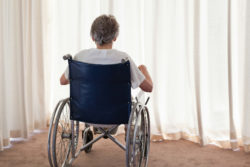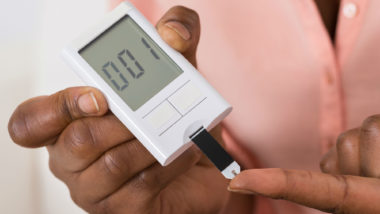 Elevated risk of diabetes amputations could be among a number of Farxiga side effects experienced by patients who have been prescribed this medication. The problem has been reported with several medications in the same class as Farxiga.
Elevated risk of diabetes amputations could be among a number of Farxiga side effects experienced by patients who have been prescribed this medication. The problem has been reported with several medications in the same class as Farxiga.
In May 2016, the FDA reported on two studies that found an association between diabetes amputations and a similar drug, Invokana (canagliflozin). More recent research from Scandinavia, published in the British Medical Journal, identified the same problem in patients taking Farxiga (dapagliflozin) as well as Jardiance (empagliflozin). These studies strongly indicate that such Farxiga side effects could be similar to those of other SGLT-2 inhibitor medications.
What are SGLT-2 Inhibitors?
Also known as “gliflozin” drugs, SGLT-2 inhibitors work by preventing reabsorption of excess blood sugar (glucose) by the kidneys. Normally, normal glucose levels are maintained by proteins known as sodium-glucose cotransporters (SGLTs), the most important of which is SGLT-2.
This protein helps in the reuptake of glucose into the kidneys, after which it is re-released into the bloodstream. Medications such as Farxiga disable this mechanism, after which excess glucose is passed through urination.
The Farxiga and Jardiance Study
This study was conducted by Dr. Peter Ueda, a postdoctoral researcher at Karolinska University Hospital in Stockholm, Sweden. He recommended that patients taking Farxiga and other SGLT2 inhibitors be monitored for signs of foot ulcers or peripheral artery disease as these conditions could increase the risk of lower limb amputation.
According to the statistics of the study, 61% of patients were on dapagliflozin, 38% were on empagliflozin, and 1% were on canagliflozin. Dr. Ueda and his team reportedly analyzed national health data from Sweden and Denmark for approximately 17,213 patients prescribed SGLT2 inhibitors and 17,214 patients prescribed GLP1 receptor agonists between July 2003 and December 2016.
The researchers reportedly found that SGLT2 patients were twice as likely to undergo lower limb amputation. The team had also taken into account factors that could have influenced the results including patient medical history, other medications, and socioeconomic conditions the patients lived in.
More Farxiga Side Effects
Ironically, several adverse events associated with gliflozin drugs are the same problems these medications were intended to prevent. In May 2015, the FDA published a warning about gliflozins in general.
The FDA warned that Farxiga side effects could include an elevated risk of a potentially fatal condition known as diabetic ketoacidosis (DKA). For some patients taking gliflozins, the risk of DKA can be as much as 100 percent greater.
Just over a year later, another warning was issued, in which the risk of severe kidney injury was added to the list of potential Farxiga side effects. The most recent of Farxiga side effects to be identified is a rare but serious flesh-eating bacterial infection of the genital region, known as Fournier’s gangrene. The FDA warning about this risk factor was published in August 2018.
Farxiga Diabetes Amputations
The risk of amputation is among the more recently-identified potential Farxiga side effects and appears to be common to other prescription medications of the gliflozin class.
In the aforementioned Scandinavian study, 61 percent of the patients whose records were examined had been taking Farxiga. Additional risk factors that were identified include age and gender (older males are more likely to require diabetes amputations), obesity, and circulatory disorders such as peripheral artery disease.
The authors of that study recommend that, in order to minimize the risk of Farxiga side effects such as lower limb amputations, patients should be closely monitored. They also note that their findings “should lead to further emphasis on the importance of counseling patients on routine preventative foot care.”
Should You Stop Taking Farxiga?
If you have been prescribed Farxiga or another SGLT-2 inhibitor and have concerns about Farxiga side effects, it is important to discuss the issue with your doctor before you stop taking the medication. There may be equally effective alternative treatments available that do not present the same risk factors.
Vigilant foot care can help diabetes patients avoid amputation. Diabetic nerve damage often causes patients to lose feeling in their feet. This means they cannot feel their feet swelling or cuts on their lowest limbs, which often gives the opportunity for ulcers to develop. Farxiga patients should check their feet often and be wary of the following signs:
- Fungal Infections
- Splinters
- Ingrown Toenails
- Corns
- Bunions
- Callouses
- Plantar Warts
- Chilblains
- Hammertoes
- Dry Skin
- Gout
- Heal Pain or Heel Spurs
Patients are recommended to make healthy lifestyle choices, such as diet and exercise, to help reduce diabetic symptoms.
ATTORNEY ADVERTISING
Top Class Actions is a Proud Member of the American Bar Association
LEGAL INFORMATION IS NOT LEGAL ADVICE
Top Class Actions Legal Statement
©2008 – 2026 Top Class Actions® LLC
Various Trademarks held by their respective owners
This website is not intended for viewing or usage by European Union citizens.
E-mail any problems with this form to:
[email protected].
Oops! We could not locate your form.












